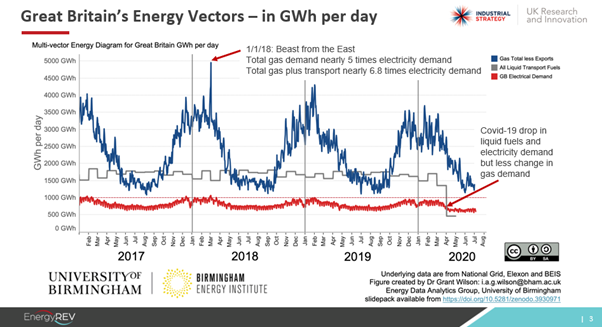By Professor David Elmes, Warwick Business School
There are a lot of great ambitions in the UK Government’s Ten Point Plan for a Green Industrial Revolution. Here I will argue that smart local energy systems (SLES) can play an important role in increasing the speed and reducing the costs of delivering the plan.
As has often been the case over time with UK Government energy ambitions, how the Ten Point Plan aims to resolve the UK’s energy needs is mainly framed as a supply problem - we need more green energy so let’s build more low carbon generation. Hence the plan includes support for offshore wind, hydrogen, new nuclear (large and small), green fuel for planes and ships plus carbon capture for where we still find the need to use fossil fuels or generate greenhouse gases.
It is great to see the consumption side of the energy equation featuring too. Targets have been pulled forward to decarbonise transport through electric vehicles along with a bundle of regulations and incentives to make buildings greener.
Focusing on supply side technologies implemented as large, centralised projects relies on grids and distribution networks . This presents two risks: The cost to expand and reinforce those networks and the time taken for new technologies to become affordable when progress is made through fewer, larger projects. These two points worry me and are where our growing understanding of smart local energy systems can offer an alternative path.
The more we electrify our energy system with large, centralised solutions, the more it costs to upgrade our grid and networks. Electrifying heating, cooling and transport all increase peak demand and variability considerably – particularly heating. This is illustrated in the image above from Dr Grant Wilson at the University of Birmingham. The red line is UK demand for electricity, the grey line the fuel in vehicles and the blue line is the demand for gas that’s seasonally very variable. Transitioning from petrol in cars and gas heating in homes and offices could increase our electricity demand by 300% in the winter. That means paying for both the new generation capacity and also paying to extend or reinforce the grid and networks. At a global level, whatever we spend on new generation capacity requires nearly as much spent on grids, networks and storage as well.
Through the Industrial Strategy’s Prospering from the Energy Revolution programme, we are learning more and more about integrating the supply, storage and use of multiple forms of energy at a local scale. EnergyREV’s approach considers how we combine these and we are studying the hundreds of projects taking place both within PFER and across the UK, seeking to understand how this can offer the volume and scale where experience raises outcomes and reduces costs. Sorting out the supply and consumption of power, heating, cooling and transport in an integrated, smart local system can be as competitive, reduce network investment, provide flexibility and be implemented faster with gains from experience effects. A local approach could also deliver wider benefits, such as improved air quality, health and wellbeing.
The large scale, supply-side, technology-focused ambitions in parts of the Ten Point Plan need to be balanced with how smart local energy systems also achieve affordable and sustainable energy at speed.
